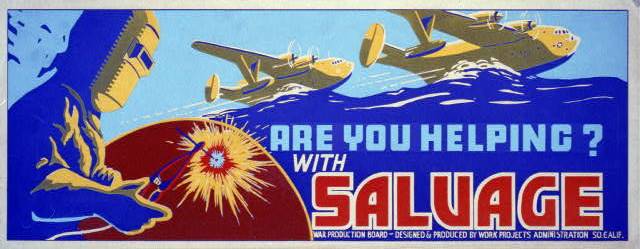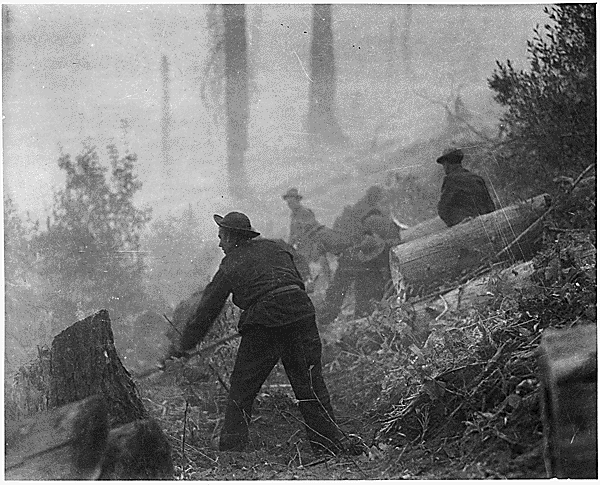(WPA poster, image courtesy of the Library of Congress Prints and Photographs Division)
During the Great Depression, New Deal work and construction programs built aircraft carriers, repaired and improved military installations, salvaged 376,000 tons of scrap metal, and did much more to bolster America's national defenses.
(WPA poster, image courtesy of the Library of Congress Prints and Photographs Division)
(WPA poster, image courtesy of the Library of Congress Prints and Photographs Division)
"(The WPA) has added to the national wealth, has repaired the wastage of depression and has strengthened the country to bear the burden of war."
--President Franklin Roosevelt, 1942, in the "Final Report on the WPA Program, 1935-43," by the Federal Works Agency, U.S. Government Printing Office, 1946.
(WPA poster, image courtesy of the Library of Congress Prints and Photographs Division)
Many people who participated in the New Deal work and construction programs went on to serve in the military or work in the defense industries during World War II. Some gave their lives to protect our freedom to enjoy the things they created, e.g., parks and community buildings.
"During the war, the (CCC) boys had a jump on the other boys. We had discipline, the experience of living in barracks, getting along with others." (George Beam, CCC Alumni, in the book "Roosevelt's Tree Army: A History of the Civilian Conservation Corps," by Perry H. Merrill, 1981.)
(WPA poster, image courtesy of the Library of Congress Prints and Photographs Division)
"But a base commander knows that to 'Keep 'Em Flying' he needs more than airplanes, more than pilots, and more than mechanics. He needs, first of all--a base--a landing field and the establishments that complete it. In erecting those bases the Work Projects Administration is fighting, with the Army Air Forces, to create a defense for America. The WPA did not enlist for this battle today. They have been fighting the Battle for America for six years. Much more than one-half of America's airport construction has been the work of the WPA. Runways have been laid; buildings have been erected; utilities have been reconditioned; drainage systems have been installed. Nests for America's warbirds have taken shape out of raw fields and meadows. Hamilton Field, whose fighter-planes guard the vital San Francisco Bay area, has felt the drive of the WPA. Projects, costing nearly $500,000, are under way at this air base. When the job is done, Hamilton Field will be a better field--a more efficient air bulwark for Pacific defense. The WPA man behind the shovel, behind the pick, and behind the wheel barrow is doing a job, is also 'Keeping 'Em Flying.' Hamilton Field dips its wings in tribute to the WPA."
























